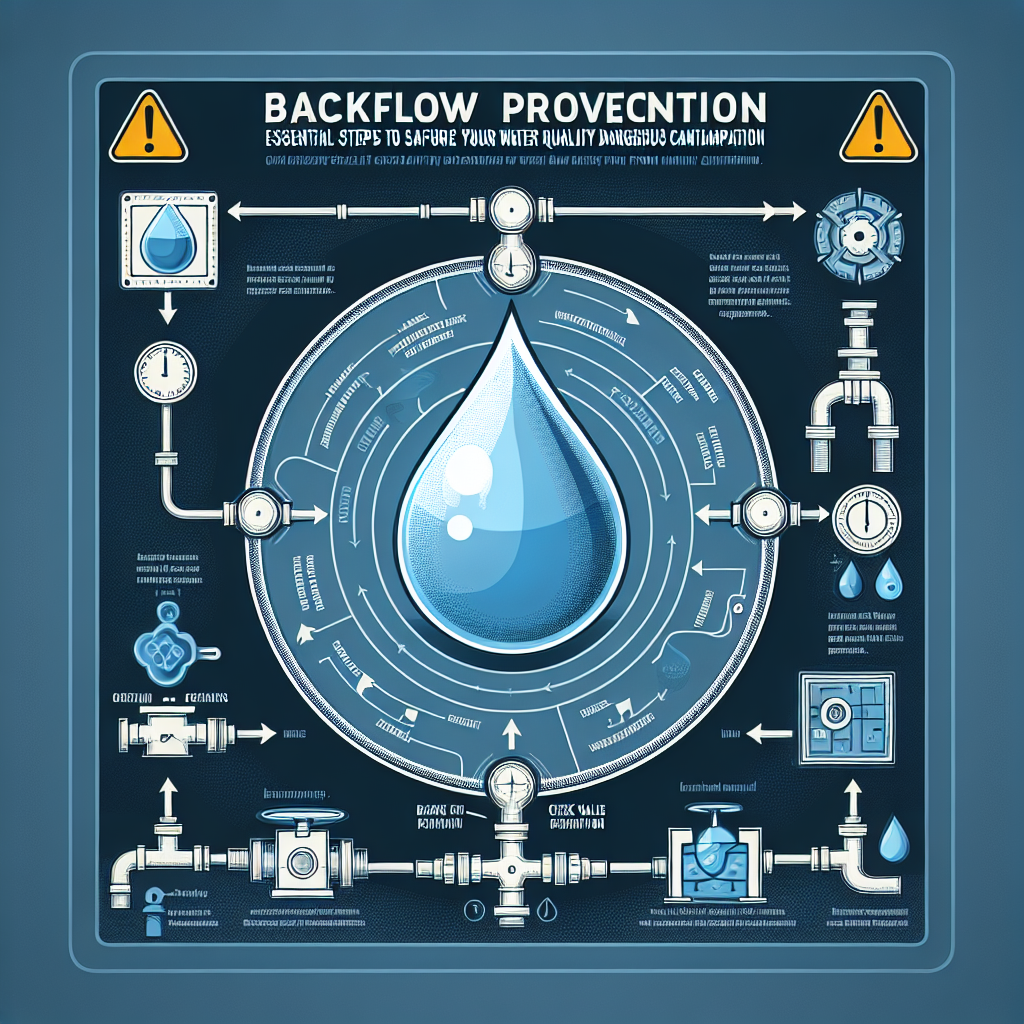Water is essential for life, yet it can carry hidden dangers if not properly managed. Backflow, a term that refers to the unwanted reversal of water flow, poses a serious risk to our drinking water systems. Understanding backflow prevention is crucial for ensuring that our water supply remains clean and safe. In this article, we’ll explore the importance of backflow prevention, how to protect your home, and the role of regular maintenance in safeguarding your water quality.
What is Backflow, and Why is it a Concern?
Backflow occurs when water flows backward from its intended direction, which can introduce harmful contaminants into the water supply. This reversal can happen due to sudden pressure changes in the main water supply, often caused by factors such as:
- Pipe breaks
- Fire hydrant use
- High demand for water in certain areas
When backflow occurs, pollutants from irrigation systems, chemical storage tanks, or sewage systems can enter drinking water lines. Contaminated water can pose serious health risks, leading to illnesses caused by bacteria, viruses, and chemicals.
The Importance of Backflow Prevention
Backflow prevention is not just a matter of convenience; it is an essential aspect of public health safety. Here are a few key reasons why effective backflow prevention should be a priority:
Safeguarding Public Health
By preventing backflow, we can keep our potable water safe from contamination. Communities rely on clean drinking water, which is vital for hydration and overall health. Protecting this resource protects public health.
Protecting Property Values
If a property is known to have backflow issues, it may suffer in terms of property value. Homebuyers are more likely to avoid properties that present potential health hazards, including water contamination issues.
Compliance with Regulations
Many municipalities have strict regulations regarding backflow prevention. Property owners are typically required to install backflow prevention devices to remain compliant with local laws. Not adhering to these regulations can result in fines and other penalties.
Steps You Can Take to Prevent Backflow
1. Understand Your Water System
The first step in preventing backflow is knowing the layout and components of your water system. A basic understanding of how your plumbing works helps in identifying potential backflow risks.
2. Install Backflow Prevention Devices
Investing in the right backflow prevention devices is crucial. There are several types:
- Air Gaps: A physical separation between the water supply and a potential contaminants source, commonly used in sinks and dishwashers.
- Check Valves: Mechanical devices that allow water flow in only one direction, preventing backflow when water pressure drops.
- Reduced Pressure Zone (RPZ) Valves: Advanced devices that provide the highest level of protection by using two check valves and a pressure relief valve.
Consult with a certified plumber to determine which devices are best suited for your home.
3. Regular Maintenance and Inspection
Routine checks and maintenance of your backflow prevention devices are paramount. Consider scheduling inspections at least once a year. During these assessments, professionals can ensure that your devices are functioning correctly and identify any potential vulnerabilities before they become serious issues.
4. Educate Your Family Members
It’s essential to keep your family informed about the importance of water safety. Teach them about the risks of backflow, why it’s important to report any unusual changes in water quality, and how to take action in case of a suspected contamination issue.
5. Report Any Issues Promptly
If you notice unusual changes in your water quality—such as an odd taste, smell, or color—don’t hesitate to contact your local water authority. Quick action can prevent more extensive contamination issues and help maintain the safety of your drinking water.
The Role of Professionals in Backflow Prevention
While DIY approaches can be effective, working with professionals often yields the best results. Certified plumbing professionals can conduct thorough inspections, install advanced backflow prevention devices, and provide guidance tailored to your specific situation. Investing in professional help ensures that your home is fortified against potential backflow hazards.
Conclusion: Your Water, Your Responsibility
In a world where clean water is a finite resource, understanding and implementing backflow prevention measures is a necessary responsibility for homeowners. By taking proactive steps to safeguard your water quality, you’re not just improving your health and property value—you’re contributing to the well-being of your entire community.
Make water safety a priority today, and protect your loved ones from the hidden dangers of backflow. From installing prevention devices to committing to regular maintenance, every effort counts in ensuring that your water is safe and clean. Together, we can create a safer, healthier future.
By optimizing this article for search engines with strategically placed keywords such as "backflow prevention," "water quality," and "backflow prevention devices," it helps ensure that those seeking guidance on this essential topic can easily find and benefit from the information shared.


